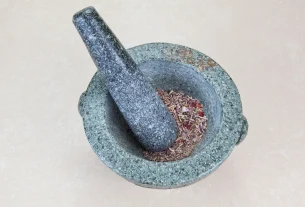Estimated Reading Time: 8 minutes
CCeating a toxin-free home is a journey, not a destination.
It’s about making conscious choices that prioritize your health and well-being, along with the well-being of your loved ones and the planet.
The good news? It’s a deeply rewarding process. I remember when I first started, it felt overwhelming. So many products, so many labels to decipher.
But, slowly, surely, I began to understand, and the changes I made transformed not only my living space but also my peace of mind.
So, let’s delve into how to create a toxin-free home.
We’ll break it down into manageable steps, offering practical advice and sharing some personal experiences to make this journey a little less daunting and a whole lot more inspiring.
Ready?
Before we even think about solutions, we must first understand the problem.
Our homes, those spaces of supposed sanctuary, can surprisingly be filled with a cocktail of hidden toxins.
These unwelcome guests can come from various sources, including cleaning products, air fresheners, furniture, and even everyday items.
Volatile Organic Compounds (VOCs), phthalates, and parabens are just a few of the culprits.
These chemicals can lead to a range of health issues, from respiratory problems to hormonal imbalances.
Take, for example, the air freshener in your bathroom.
Those “fresh linen” scents can be loaded with chemicals that, while pleasant, are doing your lungs no favors. Similarly, that gleaming new sofa?
It might be releasing formaldehyde. It’s not about paranoia; it’s about informed choices.
The kitchen is often ground zero for toxic chemicals.
From non-stick cookware that can release harmful fumes when overheated, to plastic food containers that can leach chemicals into your food, this area is a key battleground in the fight for a toxin-free home.
But fear not! We can reclaim this space with a few smart swaps.
Consider replacing your non-stick pans with stainless steel, cast iron, or ceramic options.
While they might require a bit more care, the peace of mind is worth it.
I made this switch a few years back, and while I missed the ease of non-stick initially, I quickly adapted.
Now, I love how durable my cast iron skillet is. Plus, I know I’m not inadvertently introducing chemicals into my meals.
Remember, your cookware is in direct contact with your food, so choosing non-toxic options is critical.
Plastic food containers can leach chemicals, especially when heated.
Switching to glass containers or stainless steel options is a simple but effective move.
I’ve found that glass containers are also much easier to clean and don’t retain odors or stains.
Think about that old Tupperware that has held the scent of last week’s leftovers for a month!
Commercial cleaning products are notorious for containing harsh chemicals.
Bleach, ammonia, and synthetic fragrances can irritate your skin and respiratory system.
The good news is, you can create effective, affordable, and non-toxic cleaning solutions using simple ingredients.
We’ll explore some of these cleaning recipes below, making sure the products you use won’t do more harm than good.
Forget the chemical cocktails! Here are a few simple recipes for toxin-free cleaning:
These recipes are effective, inexpensive, and much safer for you and the environment.
Plus, the satisfaction of making your own cleaning supplies is unmatched.
Remember to always test any new cleaning solution in an inconspicuous area first to ensure it doesn’t damage the surface.
The air we breathe indoors can be significantly more polluted than the air outside.
VOCs from furniture, paints, and air fresheners can contribute to this problem.
Improving your indoor air quality is another important step in how to create a toxin-free home.
Regularly ventilate your home by opening windows, especially when cooking, cleaning, or painting.
Consider investing in an air purifier with a HEPA filter to remove particles and allergens.
These machines are particularly beneficial if you live in an area with poor air quality or if you suffer from allergies.
Here’s a story from Sarah, a client of mine. She lived in an old house and suffered from severe allergies.
Her doctor suggested a high-quality air purifier, and the difference was astounding.
Her allergy symptoms diminished significantly, and she could finally enjoy her home without constantly sneezing.
This is a simple, highly effective improvement that can make a huge difference.
Furniture and decor can be sources of toxins, from the formaldehyde in pressed wood to the flame retardants in upholstered furniture.
Making informed choices here can significantly reduce your exposure. Read the labels carefully.
Look for furniture made from solid wood, natural fabrics, and low-VOC finishes.
Consider purchasing used furniture, which has often already off-gassed.
When buying new items, inquire about the materials and manufacturing processes.
Ask about formaldehyde and chemical treatments and prioritize vendors who are open and forthcoming with this information.
You can also look for certifications like Greenguard and Oeko-Tex, which indicate that a product meets certain standards for chemical emissions.
The personal care aisle can be a minefield of potentially harmful chemicals.
Shampoos, lotions, makeup—they often contain ingredients like parabens, phthalates, and artificial fragrances.
Transitioning to non-toxic personal care products is another crucial step in how to create a toxin-free home.
Learn to read labels and identify ingredients to avoid.
Some common culprits include parabens, phthalates, sodium lauryl sulfate (SLS), and artificial fragrances.
Fortunately, there’s a growing market for natural and organic personal care products.
Check out the Environmental Working Group (EWG) Skin Deep database to research the safety of different products.
Swap out your regular items for alternatives that are free from these harmful ingredients.
It can seem like a lot of effort, but with a little research, this habit becomes second nature.
One of my clients, David, was struggling with persistent headaches.
After researching, he realized that the source might be the air fresheners and cleaning products he was using.
He gradually transitioned to natural alternatives, and his headaches disappeared.
That’s one of the many reasons why learning how to create a toxin-free home is so critical. Another example is Mrs.
Rodriguez, who completely changed her bathroom habits after learning about the dangers of cleaning products.
She replaced those with safer alternatives, and her overall health improved noticeably within weeks.
The benefits of creating a toxin-free home extend far beyond simply avoiding a few chemicals.
They encompass improved health, a reduced environmental impact, and a greater sense of peace and well-being.
You’ll breathe cleaner air, enjoy a healthier living environment, and contribute to a more sustainable lifestyle.
“By eliminating toxic chemicals from your home, you’re not only protecting your health but also the health of future generations,” says Dr.
Emily Carter, a leading environmental health specialist. “It’s a simple but powerful action that can have a profound impact.”
Embarking on this journey may seem daunting. But remember: slow and steady wins the race.
Begin with small steps, such as swapping out one cleaning product at a time or making a switch in the kitchen. The most important thing is to start.
Celebrate your progress, learn from your mistakes, and enjoy the process.
It’s all about conscious choices and a commitment to a healthier, happier home environment.
As you learn and adapt, your home will become a sanctuary, a space where you can truly relax and thrive.
How to create a toxin-free home is not just a trend; it’s a lifestyle choice that can dramatically impact your overall health and well-being.
Don’t wait—start making the change today!
Frequently Asked Questions
What are the most common sources of toxins in the home?
Common sources include cleaning products (bleach, ammonia), air fresheners (synthetic fragrances), furniture (formaldehyde, flame retardants), and personal care products (parabens, phthalates). These substances can off-gas and release harmful chemicals into the air, or be absorbed through the skin.
How can I identify and avoid harmful chemicals in my home?
Read product labels carefully. Learn the common names for harmful chemicals, like VOCs, parabens, phthalates, and SLS. Research products using resources like the Environmental Working Group (EWG) Skin Deep database. Choose products with natural ingredients and certifications, such as Greenguard or Oeko-Tex.
Consider swapping to DIY solutions for cleaning to control the ingredients.
Are there specific cleaning products I should avoid and what should I use instead?
Avoid products containing bleach, ammonia, and synthetic fragrances. Instead, opt for natural alternatives like white vinegar, baking soda, and essential oils. Create DIY cleaning solutions using recipes available online to control the ingredients and avoid harsh chemicals.
Start simple with recipes like an all-purpose cleaner (vinegar and water) and glass cleaner (vinegar, water, and lemon essential oil).
How does indoor air quality affect our health, and what steps can I take to improve it?
Poor indoor air quality can exacerbate allergies, asthma, and respiratory problems. To improve your indoor air quality, regularly ventilate your home by opening windows, especially during cleaning or painting. Consider investing in an air purifier with a HEPA filter to remove particles and allergens.
Avoid using air fresheners and scented candles, which often contain VOCs.
What are some simple changes I can make to reduce my exposure to toxins in the kitchen?
Replace non-stick cookware with stainless steel, cast iron, or ceramic options. Swap plastic food containers for glass or stainless steel. Store food in glass containers and avoid microwaving food in plastic. Be mindful of food processing and packaging to minimize chemical exposure.



